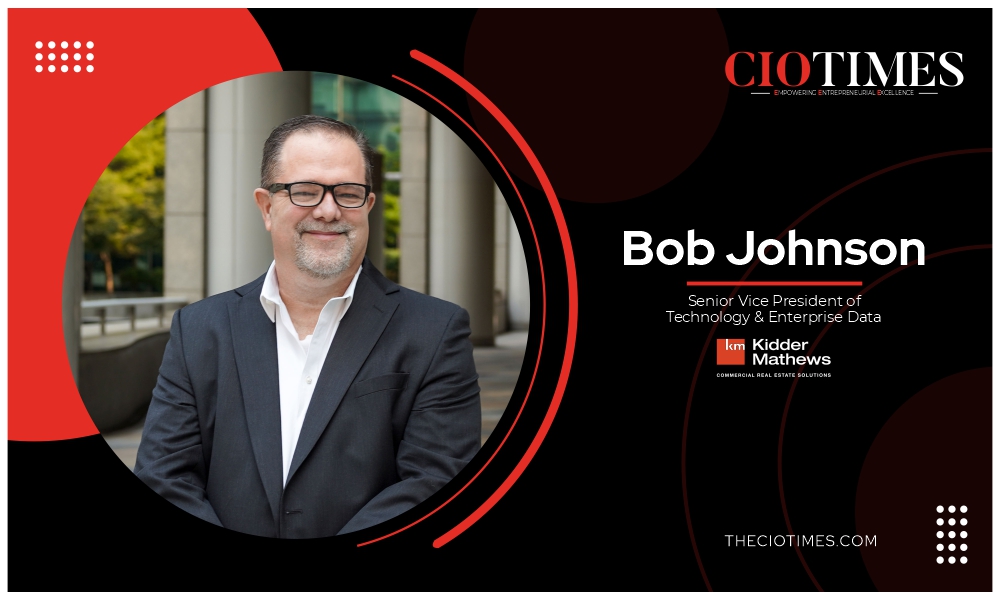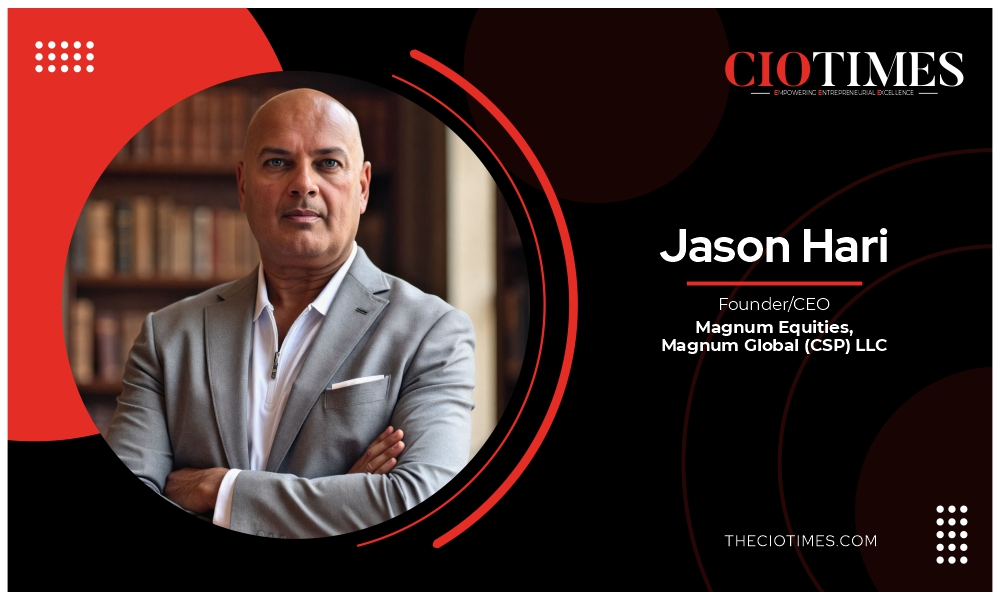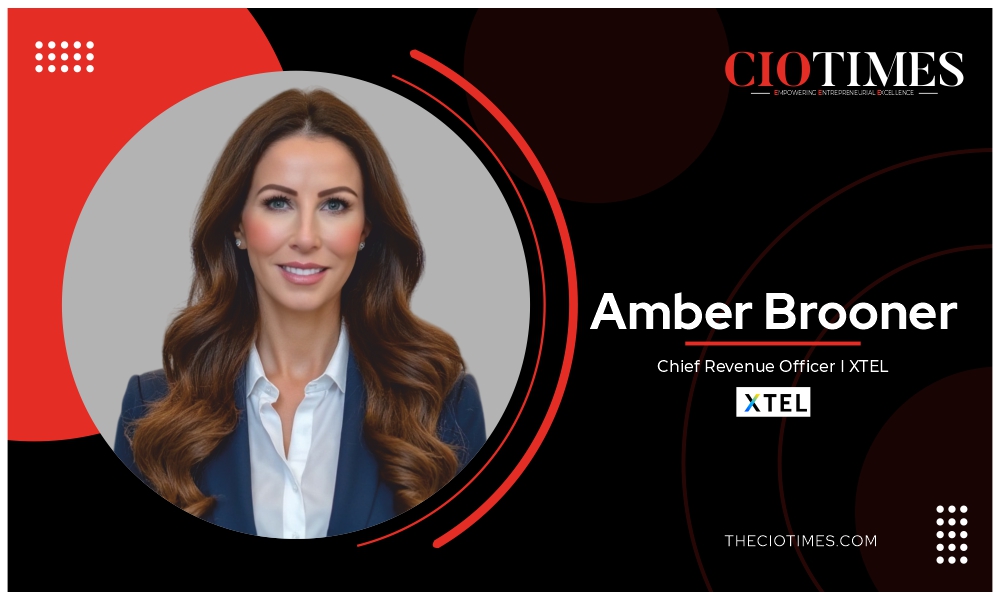The information technology landscape has never stood still. From the early shift from analog to digital, to the rise of wireless communication, mobile computing, and AI-assisted systems, each wave of change has reshaped industries and demanded new ways of thinking.
At the center of this evolving landscape is Bob Johnson, Senior Vice President of Technology & Enterprise Data at Kidder Mathews. With a career spanning pivotal transitions in technology, Johnson has guided award-winning teams, earned recognition as an industry leader, and helped organizations harness enterprise data to drive innovation, scalability, and long-term business value.
In the following conversation, Johnson shares his journey, the lessons learned from leading complex initiatives, and his perspective on how technology can serve as both a catalyst for growth and a foundation for the future of real estate.
What first inspired your career in technology, and how did you grow into a leadership role in enterprise data?
My career began during a pivotal era marked by the transition from analog to digital technology, where I witnessed—and actively contributed to—transformative shifts such as the move from wired to wireless communication, the evolution from desktop to mobile computing, and the emergence of AI-assisted systems. Each of these transitions not only reshaped industries but also demanded new ways of thinking, innovating, and leading. Navigating this constant wave of change has strengthened my adaptability and reinforced my belief that technology is not just a tool, but a catalyst for organizational growth and human potential.
My curiosity and drive to continuously learn have fueled my progression from practitioner to leader, enabling me to guide teams and enterprises through complex data and technology landscapes while fostering innovation, scalability, and long-term business value.
How has your role at Kidder Mathews evolved over the years, and what areas of responsibility do you find most rewarding?
In the past, I witnessed several technology decisions being made in isolation—or sometimes hastily—without fully considering the needs of the business, the end users, or even the long-term support mechanisms required to sustain those solutions. These misaligned approaches often resulted in inefficiencies, rework, or missed opportunities for true business impact. Those experiences have been instrumental in shaping my perspective and guiding me toward what I now find to be the most rewarding aspect of my role: building genuine collaboration and partnerships across departments.
Because technology touches every dimension of our business, I see my primary responsibility as ensuring it is not implemented for its own sake, but strategically leveraged to address real enterprise and departmental challenges. By working closely with teams to deeply understand their goals and pain points, I can design and deliver solutions that not only reduce friction and solve problems but also enhance productivity, drive innovation, and create measurable value. For me, the most meaningful success comes from this integrative, problem-solving approach—where technology becomes a true enabler of growth and efficiency across the organization.
You have been recognized multiple times as a top technology professional and for leading award-winning teams. What do you consider the foundation of that sustained success?
I hold a deep belief in people and in the principle of continuous improvement—striving to ensure that each project, initiative, or interaction is better than the one before. For me, success is rarely the result of chance; rather, it comes from the deliberate convergence of preparation, opportunity, and perseverance. When this is paired with consistent effort, adaptability in the face of change, and a commitment to learning, the results are not only impactful in the short term but also sustainable over time. I emphasize this philosophy in both my leadership and collaboration with others, reinforcing that progress is achieved through incremental improvements, resilience, and shared accountability. This mindset has been fundamental in helping teams I’ve worked with embrace innovation, overcome challenges, and deliver lasting value.
Real estate is in the midst of significant transformation. From your perspective, how is enterprise data helping organizations stay agile and competitive in this sector?
Enterprise data is not just an important asset in our industry—it is the foundation for informed decision-making and strategic growth. As certain industries expand, others contract, and as entirely new sectors emerge, the demand for space to house these businesses is in constant flux. By harnessing and analyzing enterprise data at scale, we gain the ability to identify macro- and micro-trends, anticipate shifts in demand, and provide clients with solutions that align with both their immediate needs and long-term aspirations. Data delivers insight into the why behind market dynamics, enabling us to guide clients in determining how specific types of space will support their business models, workforce strategies, and operational goals. More importantly, it informs where that space should be located to maximize efficiency, accessibility, and growth potential. In this way, data is not simply a reporting mechanism—it is a strategic tool that transforms uncertainty into clarity and empowers clients to make decisions with confidence.
From your experience, what obstacles most often derail large-scale technology initiatives—and how do you overcome them?
Over the course of my career leading enterprise technology and data initiatives, I’ve observed a recurring truth: most large-scale technology projects don’t fail because of the technology itself. They fail because of the human, organizational, and strategic factors that surround it. Technology, at its core, is an enabler. But without clarity, alignment, and strong leadership, even the most advanced solutions can fall short of their promise.
By embedding strong governance, aligning stakeholders, investing in change management, and ensuring every initiative maps back to measurable business outcomes, leaders can dramatically increase their chances of success. When these elements come together, technology ceases to be a source of frustration and becomes what it is meant to be: a catalyst for innovation, growth, and long-term enterprise value.
Mergers and acquisitions often bring enormous complexity. What’s your approach to uniting systems, teams, and data strategies during integration?
A successful integration is not simply about merging systems or reducing costs—it’s about creating a stronger, more capable enterprise. By grounding every decision in business drivers, balancing speed with stability, prioritizing people and culture, and building a scalable technology foundation, leaders can turn the complexity of integration into a catalyst for growth. They present a unique opportunity to create value, but also one of the greatest risks if not managed carefully. Technology systems, people, and strategies are at the heart of any successful integration. To achieve sustainable success, leaders must go beyond tactical execution and adopt a thoughtful, balanced, and targeted approach.
Every integration should begin with clarity around why the deal happened. Is the goal to expand into new markets, gain operational efficiencies, acquire talent, or accelerate innovation? By understanding the primary business drivers, technology leaders can align integration priorities to what truly matters—ensuring that every decision supports long-term strategic outcomes, not just short-term technical fixes.
One of the most complex aspects of M&A is deciding what to keep, merge, or retire. A thoughtful technology integration assesses redundancies and risks across systems, aligns system choices to business priorities, and ensures scalability and future-readiness rather than clinging to legacy approaches. The focus should be on building a unified, agile ecosystem that supports the combined organization’s strategic goals.
Without strong governance, integrations can stall or drift. Establishing clear accountability, escalation paths, and decision rights ensures alignment and prevents bottlenecks. Governance also enforces discipline in execution, keeping the integration targeted and value-driven.
Finally, integrations must be measured against the outcomes promised in the deal rationale. Defining success metrics—such as cost savings, market expansion, or innovation speed—provides clarity and allows leaders to communicate progress transparently, building trust with both internal and external stakeholders.
Culture plays a vital role in technology adoption. How do you create and maintain a “white glove” service-oriented culture within your teams?
I make it a priority to participate in as many projects and deployments as possible, not only to stay connected to the work but to set a visible standard for how we interact with our customers and deliver outcomes. My goal is to demonstrate what exceptional service looks like in practice—what we call our “orange glove” service, going above and beyond in every interaction. This means that every project, no matter the size, is delivered with care, attention to detail, and a focus on exceeding expectations. I also visit each of the offices where our team members are based, so I can engage with them directly in their environment. These visits are about more than presence; they allow me to better listen, respond, and serve our internal customers in real time. By being intentional and transparent in my interactions, I help reinforce that customer service is not a department—it’s a culture.
At the heart of our approach is a people-first model. We believe that every internal customer and every team member deserves respect, empathy, and a thoughtful focus on their needs. Whether it’s resolving an issue, supporting a deployment, or providing guidance, we aim to meet each situation with professionalism and genuine care. This philosophy not only strengthens trust and relationships but also creates a foundation for sustainable excellence in both service and delivery.
Looking back at your career, what milestones or achievements stand out as turning points that shaped your leadership journey?
Several key milestones have shaped my leadership journey. Shortly after the start of my career, I was asked to lead the Tri-State area helpdesk. It was in that role that I began applying two principles that still use today: do it once and do it right—and treat others the way I would want to be treated. Those early lessons in accountability and empathy became the foundation of my leadership style.
As my career progressed, I had the opportunity to lead projects across international borders. Delivering solutions in other countries was both eye-opening and energizing—it broadened my perspective, showing me that the world is much larger than my immediate environment and that effective leadership requires cultural awareness, adaptability, and humility.
Another formative milestone was developing custom and priority technology solutions for the real estate industry. These projects gave me a front-row seat to how technology, when tailored thoughtfully, can solve industry-specific challenges and create tangible business value.
Finally, joining Kidder Mathews has been the defining chapter. Here, I’ve been able to bring together all my prior experiences to build and lead an outstanding—and award-winning—technology team. It has been one of the most rewarding milestones of my journey, allowing me to not only deliver enterprise value but also mentor, grow, and empower others to reach their full potential.
From your experience, what differentiates organizations that truly embed data-driven decision-making into their DNA from those that only adopt it at a surface level?
Many organizations today talk about being “data-driven,” but in practice, there’s a wide gap between those who truly embed it into their DNA and those who only adopt it at a surface level. The distinction lies less in the tools they use and more in the culture, mindset, and operating models they build around data. For example, leaders at every level must genuinely trust data as a foundation for decision-making, and they need to encourage curiosity, questioning, and fact-based discussions over gut instincts or hierarchy. Additionally, data must be baked into the design of processes, strategies, and customer experiences from the start. It’s proactive, not reactive.
Organizations that truly embed data-driven decision-making don’t just use data as a resource—they live it as a principle. They see data not as an output, but as an input to strategy, culture, and growth. In these companies, data isn’t a supporting actor; it’s part of the organizational DNA that guides how people think, collaborate, and act every day.
The role of a technology leader extends beyond technical expertise. How do you balance operational excellence with innovation, especially in a business as capital-intensive as real estate?
Excellent question! Technology leaders often walk a tightrope between keeping the lights on and pushing the boundaries of innovation. In capital-intensive industries, where margins for error are slim and investments are substantial, this balance is especially critical. Innovation can’t be innovation for its own sake—it must directly support strategic business objectives. By tying innovation to revenue growth, cost efficiency, or customer experience improvements, leaders can justify investments while keeping operations stable. Operational excellence is non-negotiable. Core systems and processes must remain reliable, secure, and cost-effective. Leaders can free up capacity for innovation by driving efficiencies—automating routine tasks, modernizing infrastructure, and eliminating waste—then reinvesting those savings into experimentation and growth initiatives. Balancing operational excellence with innovation in a capital-intensive environment isn’t about choosing one over the other—it’s about creating a sustainable model where operational efficiency funds and enables innovation. This balance not only protects the enterprise but also positions it to adapt, grow, and thrive in the face of constant change.
What emerging technologies or trends in proptech, data analytics, or enterprise systems do you believe will have the biggest impact on real estate in the next five years?
When I look at the next several years, I believe four areas of developing technology will have the biggest impact on real estate: enterprise data, AI, smaller and more powerful computers, and predictive analytics. Trends in these verticals are converging to reshape how decisions are made, how deals are won, and how clients are served.
At Kidder Mathews, we’ve been intentional about preparing for this future. We’ve built the foundation of our advanced technology playbook through a unified platform we call KM Logic™. This platform positions us to integrate enterprise data with AI and predictive analytics in a way that delivers real-time insights and competitive advantage. In a market where timing and accuracy are everything, the ability to harness accurate data, serve it through AI, and apply predictive models will directly determine who wins deals and creates lasting value.
Finally, is there a guiding principle, quote, or personal philosophy that you live by and that influences your leadership style?
“Luck favors the prepared.” – My grandfather
I believe that what many people call “luck” is often the result of preparation meeting opportunity. In leadership and technology, preparation means doing the hard work up front: anticipating challenges, building strong teams, investing in skills, and developing a clear strategy. When opportunities arise—whether it’s a new market shift, an emerging technology, or a sudden client need—those who are prepared are positioned to respond quickly and effectively. This mindset shapes how I approach projects and leadership: success isn’t about waiting for the right moment, it’s about being ready when that moment comes.
“Don’t make hard even harder.” – Kidder Mathews Chairman & CEO, Bill Frame, SIOR, CCIM
Technology projects are inherently complex, and change can be challenging for organizations. I’ve learned that technology leaders have a responsibility not to add unnecessary layers of complication. Whether through over-engineered solutions, unclear communication, or misaligned priorities, it’s easy to make a difficult task even more difficult. My approach is to simplify where possible—clarifying objectives, streamlining processes, and focusing on the essentials that drive value. By doing so, teams can direct their energy toward solving the real challenges, not untangling avoidable complexity.




